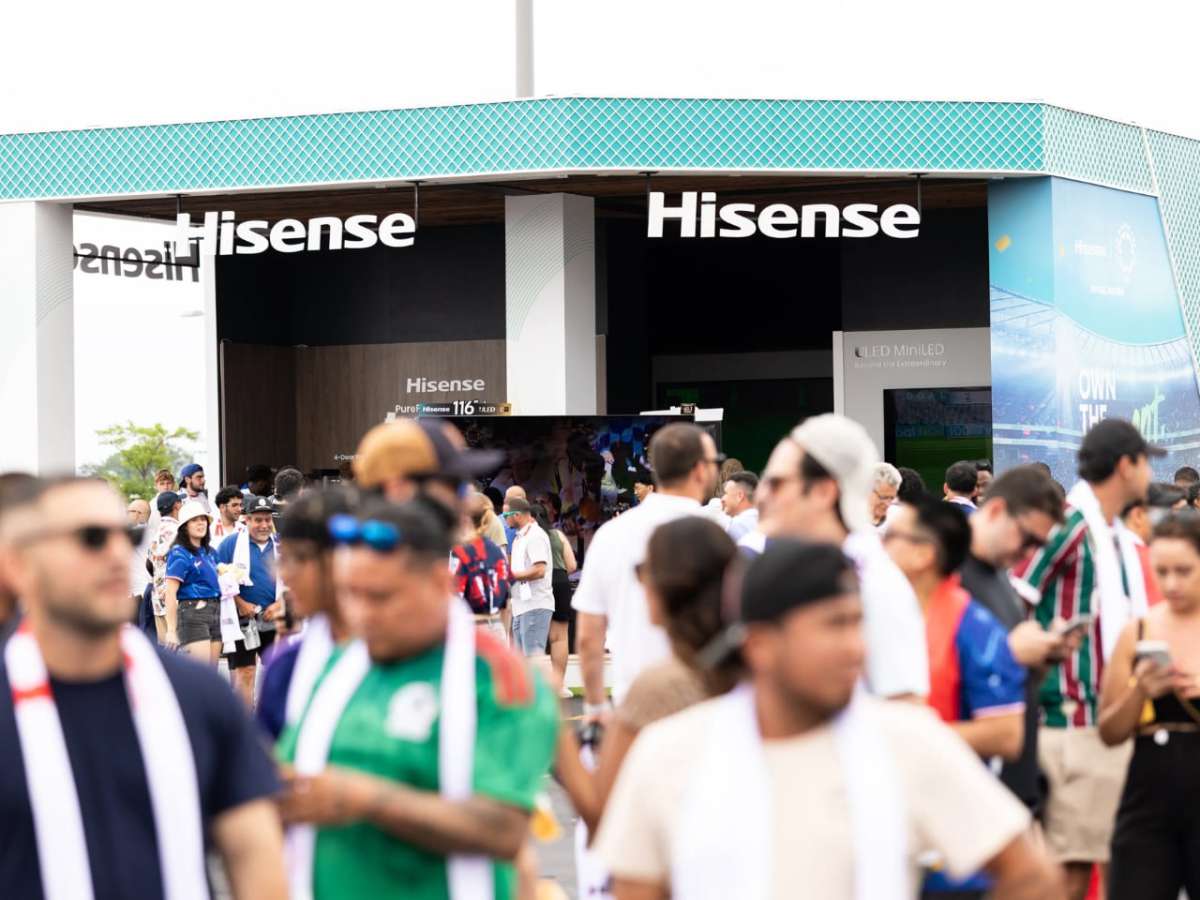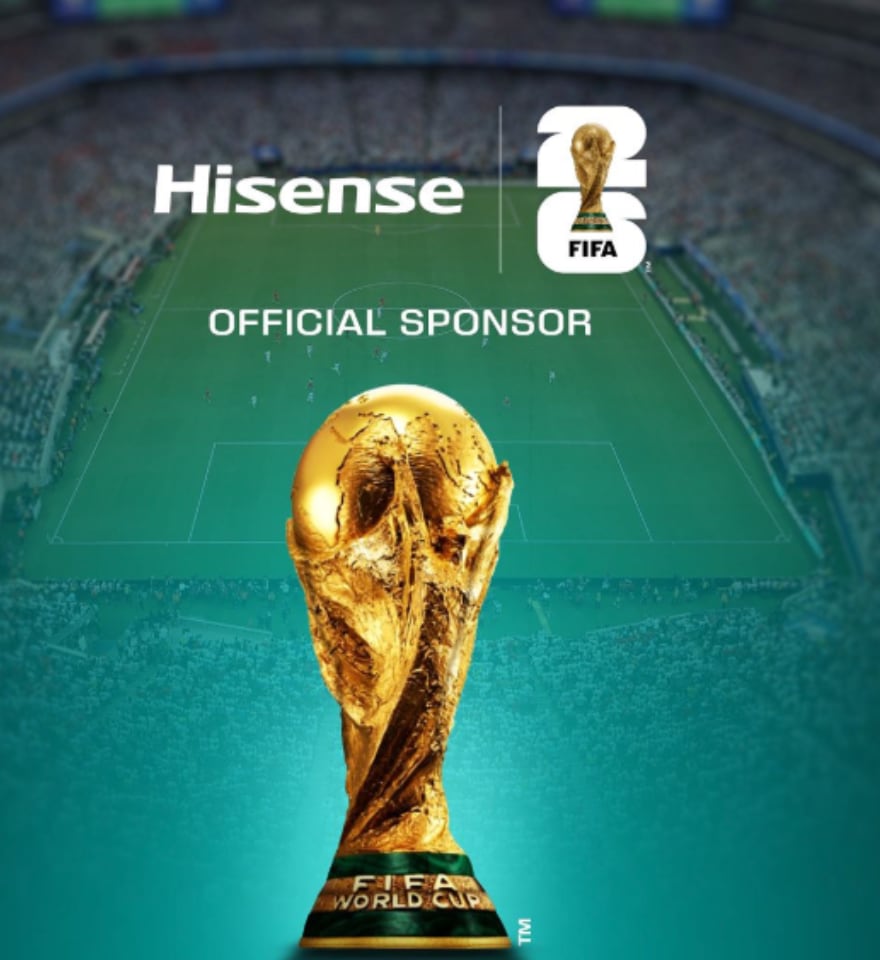
So here’s some cool news from IFA 2025 in Germany: Hisense just locked down a Global Official Sponsor deal for the FIFA World Cup 2026. This is actually their fourth time partnering with FIFA and their third World Cup gig, which is pretty impressive considering they only started this relationship seven years ago.
⬇︎ Jump to summary
More info: Hisense
The announcement went down at a press conference called “Own the Moment” with Hisense Group CEO Fisher Yu and a bunch of other executives, plus FIFA’s Chief Business Officer Romy Gai. And honestly? This feels like a big deal because it shows how far Hisense has come from being the budget TV brand to actually competing with the big dogs.
But this isn’t just about slapping their logo on stadium boards. Hisense has seriously leveled up their display game. The transformation has been dramatic. According to Omdia research, they’re now the number two TV brand globally for shipments, and they absolutely dominate the 100-inch TV category. Their reputation is no longer defined by price alone. Their RGB-Mini LED tech gives them a real edge over Samsung, Sony, and LG because they’re using individually controlled color LEDs instead of traditional backlighting that those competitors rely on. Samsung’s Neo QLED and Sony’s premium displays use conventional LED backlighting with quantum dots, while LG’s OLED panels avoid backlighting entirely but struggle with peak brightness. Hisense’s RGB-Mini LED approach delivers individually controlled red, green, and blue light for more accurate colors and better control over what you’re seeing on screen. Come World Cup 2026, you’ll see this tech deployed across venues in the U.S., Canada, and Mexico.
The Tech Behind the Beautiful Game
So what’s RGB-Mini LED all about? Basically, instead of using one big backlight, Hisense is using tiny red, green, and blue LEDs that can be individually controlled. This means way more accurate colors and seriously impressive brightness compared to older LED tech. And I’m not just reading press releases here; I’ve actually tested their stuff.

Remember when I reviewed the Hisense Canvas TV? That thing turned my sunroom into an art gallery, and the matte screen just ate up the glare from direct sunlight like it was nothing. Then there’s the Hisense 100U8QG I tested, which pumps out 5,000 nits of brightness with over 5,000 local dimming zones. It’s basically cinema quality without the $50,000 price tag that Samsung or Sony would charge you.
Price: $4999.99 $3,497.99 (30% off!)
Where to buy: Hisense 100U8QG on Amazon
What’s really impressive is how Hisense builds their own components and controls their manufacturing from start to finish. That’s why they can pack flagship RGB-Mini LED features into TVs that don’t require you to take out a second mortgage. They’re also doing the sustainability thing right, which sets them apart from many competitors. According to their product specifications, models like the Canvas TV use Forest Stewardship Council-certified wood and meet international energy efficiency standards. These aren’t just checkboxes on a spec sheet; they’re genuine differentiators in a market where premium features often come with environmental trade-offs. The World Cup partnership is basically their chance to show off all this tech to billions of people during the most-watched sporting event on the planet.
What You’ll Actually See at the Stadiums
According to Dennys Li, President of Hisense’s Display Business Unit, the company’s technology will be integrated throughout World Cup venues to handle the most challenging viewing conditions. Picture this: remember that anti-glare performance I loved on the Canvas TV in my ridiculously sunny sunroom? Now imagine that same tech deployed in a packed stadium with thousands of overhead lights and camera flashes going off constantly. Fans watching replays on massive stadium screens during a day match will see the same vibrant colors and sharp details that I experienced testing the 100U8QG in my bright living room. It’s one thing to engineer displays for controlled home environments; it’s another entirely to deliver consistent performance when 80,000 fans are generating heat, movement, and ambient light chaos.
The displays they’re using have the Hi-View AI Engine, which adjusts picture quality on the fly based on what’s happening with the lighting and content. So whether you’re in a bright concourse or a darker viewing area, the image stays consistent. Fast refresh rates keep the action blur-free when players are sprinting down the field, and all those local dimming zones mean you get great contrast even when it’s an evening match under stadium lights. Plus, the wide color gamut makes sure team colors and sponsor logos look exactly how they’re supposed to.
What I appreciate is that Hisense designs this stuff for real-world conditions, not just perfect lab environments. Sports broadcasting is brutal on displays because the content changes rapidly and lighting is all over the place. Bitong Yin from Hisense’s Air Business Unit mentioned they’re showcasing more than just displays (they’ve got a whole smart home ecosystem), but let’s be real: the display tech is the star of this show.
Three Countries, Massive Exposure
FIFA World Cup 2026 is the first one hosted across three countries (U.S., Canada, and Mexico), which means Hisense gets exposure in a ton of different markets with different TV preferences and buying habits. Their branding will be everywhere: stadiums, fan zones, media centers, you name it.
According to Romy Gai from FIFA, this partnership is going to deliver some serious viewing experiences through all that tech integration. And the timing couldn’t be better because people are buying bigger TVs than ever. Industry data shows huge demand for 85-inch and larger screens, which is exactly where Hisense dominates. The World Cup always drives TV sales (because who doesn’t want to upgrade for those viewing parties?), and Hisense is positioned perfectly to catch that wave.
Why This Matters for Your Next TV
Hisense has been pouring money into RGB-Mini LED development, building their own manufacturing processes and supply chains. FIFA wouldn’t pick them as a Global Official Sponsor if they didn’t trust the tech to perform at the highest level. For us as consumers, this is actually great news because the tech they’re developing for these huge professional installations always trickles down to regular TVs you and I can buy.
Those RGB-Mini LED advancements you’ll see at World Cup venues in 2026? They’re going to show up in future Hisense TVs, probably at even better prices as they scale up manufacturing. This is also a perfect example of how sports sponsorships have evolved beyond just advertising. Hisense isn’t just slapping their name on stuff; their display tech is actually improving how billions of people will watch the matches.
I’ve spent real time with Hisense’s premium displays, so I’m not just talking theory here. The Canvas TV’s matte screen eliminates reflections in crazy lighting conditions. The 100U8QG delivers legitimate cinema-quality images even in broad daylight. And the 116UX with its RGB-Mini LED tech? The color accuracy and brightness levels would have seemed impossible just a few years ago. These are real capabilities I’ve measured and experienced, not marketing fluff.
Price: $1,297.99 $897.99 (31% off!)
Where to buy: Hisense 65-Inch Class QLED 4K S7N CanvasTV on Amazon
This FIFA partnership proves what I’ve been saying: Hisense has gone from “cheap TV option” to “legitimate premium tech innovator.” Their focus on giant screens, RGB-Mini LED, and AI-powered picture processing isn’t just a strategy; it’s actually working. And FIFA’s endorsement validates everything they’ve been building toward.

More info: Hisense
If you’re thinking about upgrading your TV, you might want to keep an eye on what Hisense releases in late 2026 and early 2027. Based on their historical product cycles and the technologies they’re showcasing at the World Cup, that’s when things are going to get really interesting.





